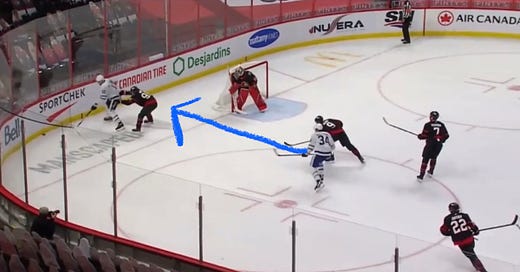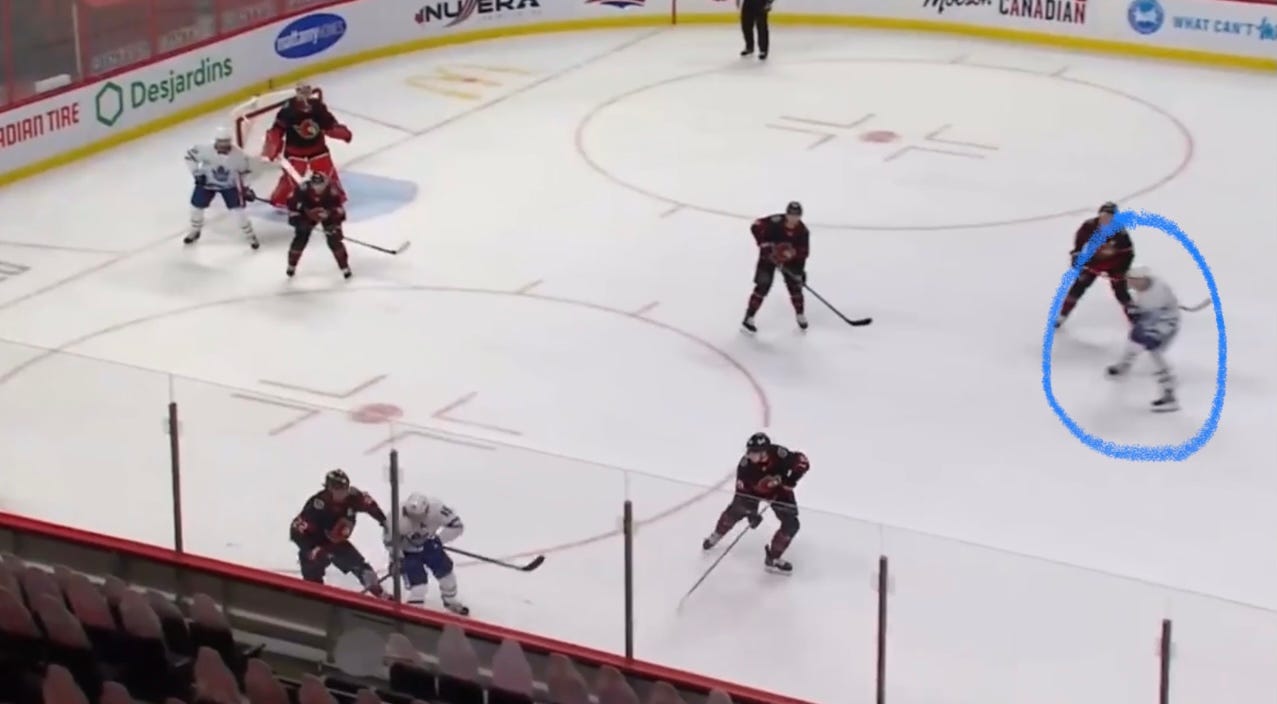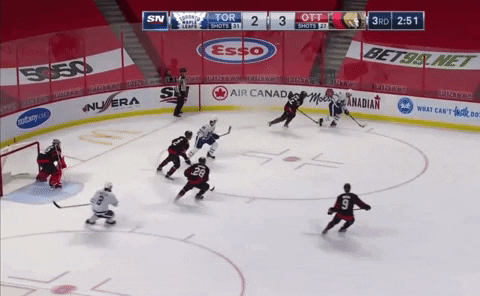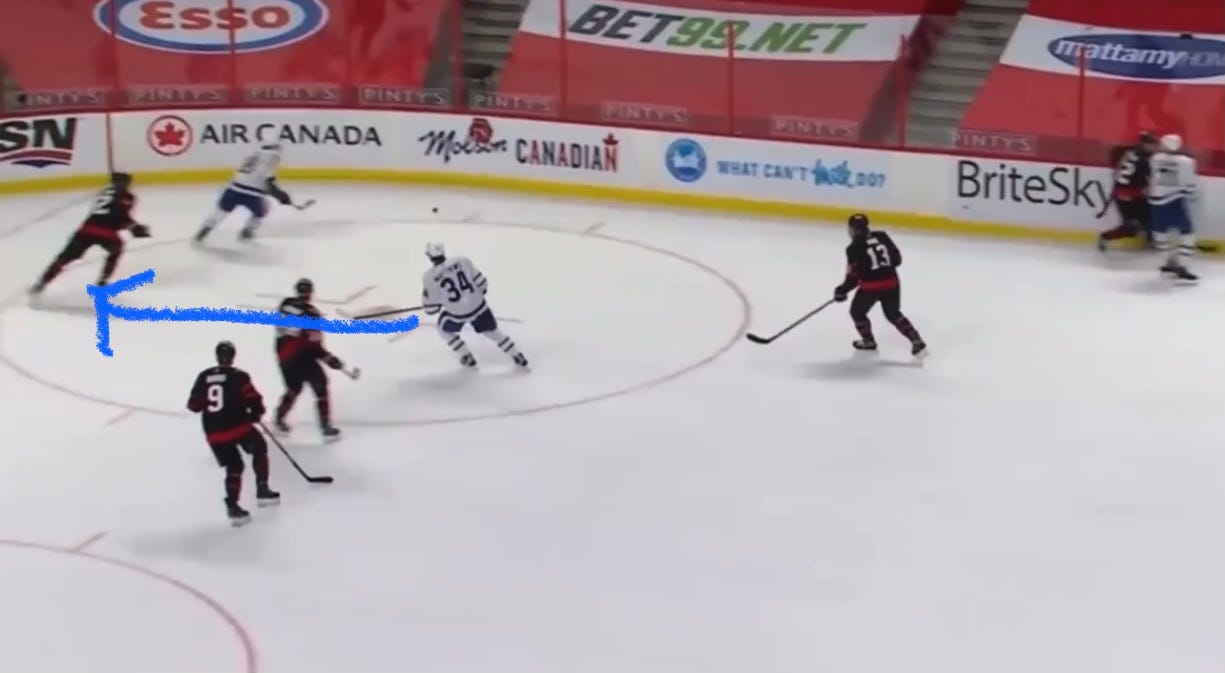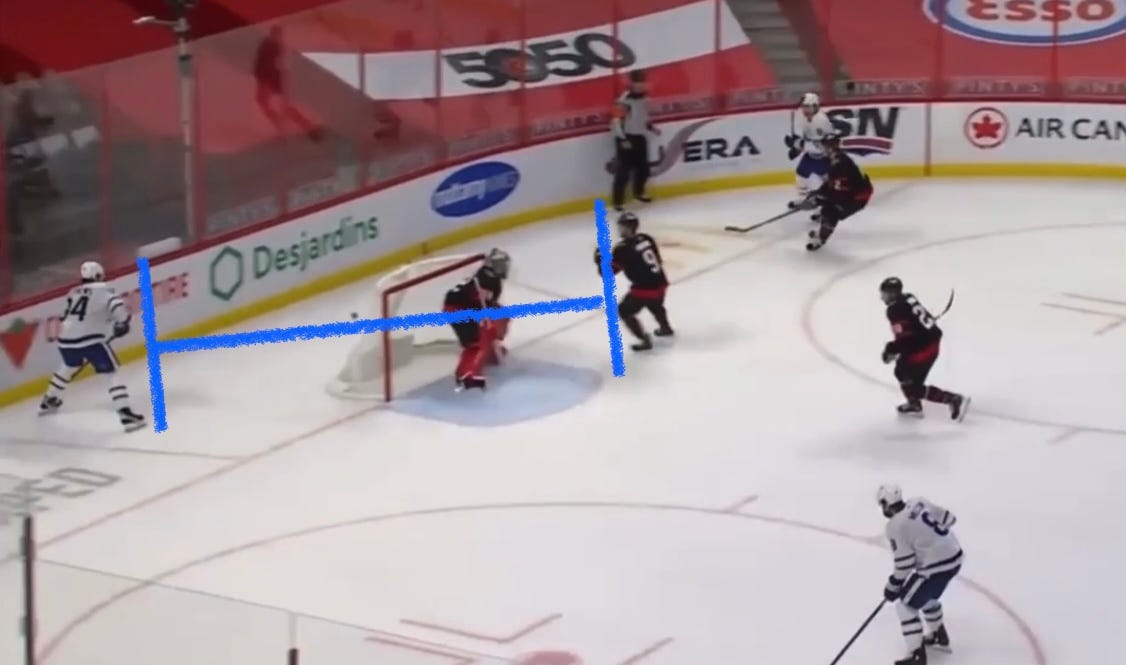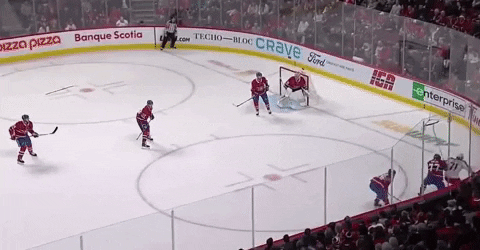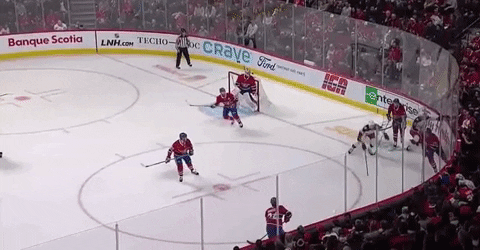Boo! Happy Halloween!!
We’ve covered two areas in puck support so far. We are going to continue down this rabbit hole even more.
This is part 3 of a 3 part series:
Routes into Support
While each team’s system is different and will alter the routes players take, there are some guiding principles.
Rink geography is the same everywhere
When in possession, move behind where your teammate just left and cleared
The net is an obstacle defenders have to make choices around
We are going to focus on routes into close support. Far support is all about patience and reading the unfolding events.
The Route into Support - AM34 Example #1
Here is a great example from Auston Matthews (AM34)
Let’s break it down into a few frames:
Mitch Marner (MM16) climbs/skates up the wall and eventually sends/cycles the puck down the boards. AM34 goes down to fill into the space MM16 just left and gives close support to Alex Galchenyuk (AG12).
As AM34 moves down, using the faceoff dot as a guiding marker, he continues to use our rule of thumb and supporting off the heels of AG12 + AG12’s check. This gives AG12 the space to skate up the wall.
Rather than jumping early across the face of the goal, AM34 uses the back of the net as a way to create separation from his check. Now AM34 has a choice to stop behind the net or skate up the wall and into a high cycle/scissors/etc.
The Route into Support - AM34 Example #2
Let’s break it down into a few frames:
AM34 starts on the edge of the frame and notices 3 players low.
He doesn’t stay high and cover for the D, but rather dives into near support. Again, AM34 is skating toward the near side dot. He notices John Tavares (JT91) going toward the wall to pick up the puck.
AM34 works off the space JT91 is creating by moving out of that middle space.
Most players would head to the front of the net, but AM34 ends up behind the net. With this, AM34 creates a ton of time and space to operate in.
Bringing It All Together
This is the end of our 3-part series on OZ puck support. We found a great CBJ example to highlight some key elements from all of them.
The play was supposed to go behind the net to the far side player (again using the net as an obstacle), but the play turns into a board battle.
Now the supporting player decides on close support, moves towards the space recently vacated, and maintains speed through the battle:
Away from the battle, players show patience to stay spaced out, and produce movement into spaces that will stretch the defense:
Every team’s system is different and routes will alter based on that, but the principles remain the same.
Further Reading
Turning 50/50 puck races and battles into easy possession for you and your team
Using the mental framework of improv comedy to increase team play
Did you enjoy this newsletter?
Help us spread the ideas within and share it with the people you care about

